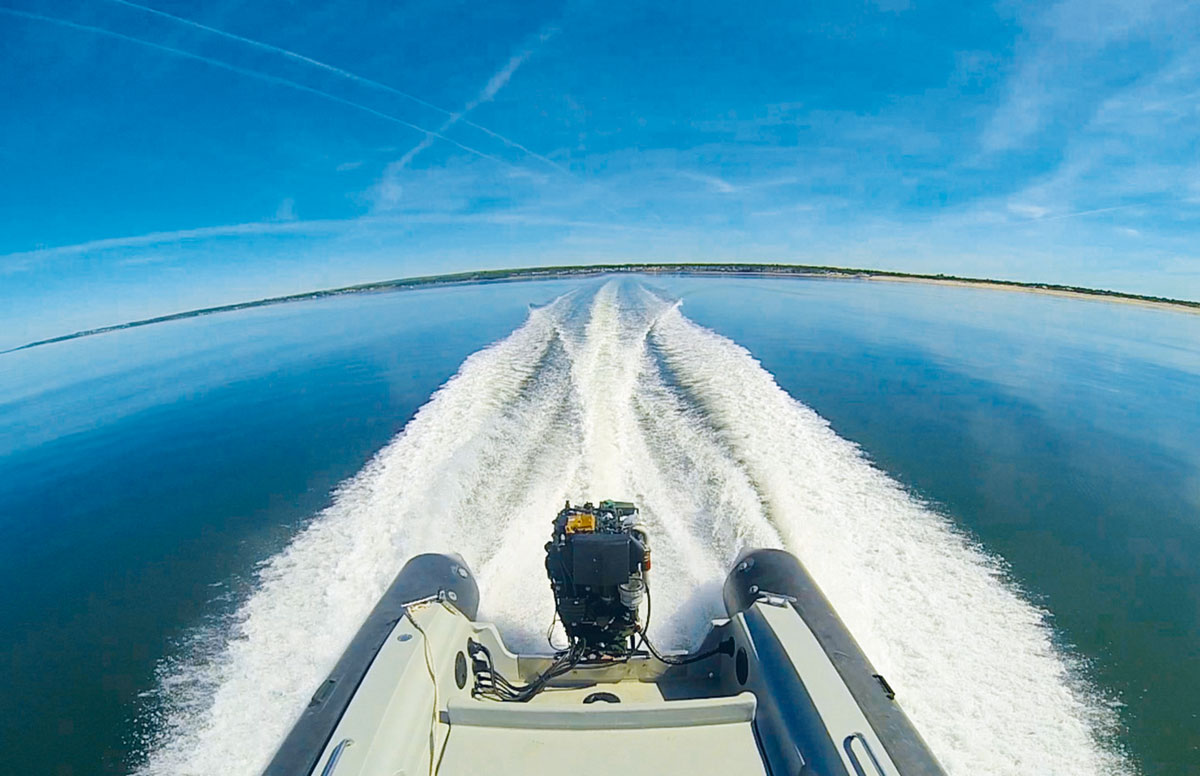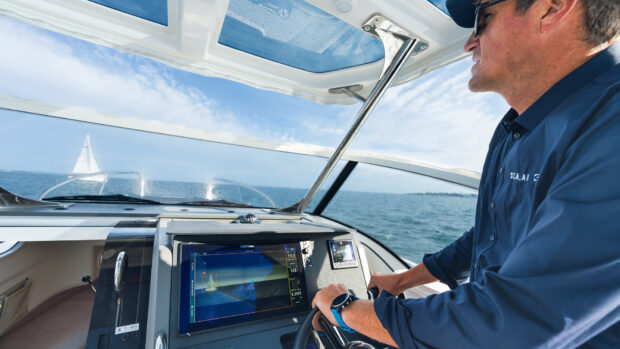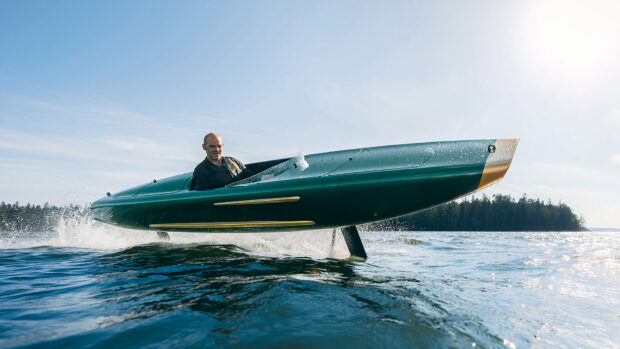Mercury Diesel's new twin turbo 370hp TDI 4.2 is the first production marine engine to boast a better power-to-weight ratio than its petrol-powered equivalent
Mercury Diesel’s new twin turbo 370hp TDI 4.2 is the first production marine engine to boast a better power-to-weight ratio than its petrol-powered equivalent. Based on the all-aluminium V8 block designed by German car manufacturer Audi for its A8 and Q8 models, this marinised 370hp powerplant is claimed to set new benchmarks for size, weight and refinement.
Tipping the scales at a mere 379kg it is over 200kg lighter than Volvo Penta’s equivalent 370hp D6 diesel engine and even undercuts Volvo’s 8.1-litre petrol V8 by 10kg. It also has a smaller footprint than any big-block petrol or diesel engine. Petrol heads will argue that the petrol engine’s higher maximum power output of 420hp evens the score but with marine engines torque is the more siginificant figure and by this yardstick the 572ft/lbs (775Nm) of torque produced by the TDI 4.2 at 2,500rpm is unmatchable.
 More significantly this engine produces a punchy spread of power from 2,000rpm all the way up to 4,200rpm. Such wide power bands are unheard of for marine diesel engines with most of the good work happening between 2,000-3,000rpm. Petrol engines meanwhile suffer the opposite problem with maximum torque not kicking in until 3,000rpm.
More significantly this engine produces a punchy spread of power from 2,000rpm all the way up to 4,200rpm. Such wide power bands are unheard of for marine diesel engines with most of the good work happening between 2,000-3,000rpm. Petrol engines meanwhile suffer the opposite problem with maximum torque not kicking in until 3,000rpm.
Whatever measurement you choose, the new Mercury TDI 4.2 stacks up well against its closest diesel rivals, the Yanmar 8LV-370 and the Volvo D6 370. The Yanmar weighs in at 450kg, hits a peak torque of 590ft/lbs at 2,200rpm and is red lined at 3,800rpm. The Volvo weighs in at 580kg, reaches a higher maximum torque of 650ft/lbs at 2,000rpm but runs out of steam earlier with a red line of 3,500rpm. However, the real crunch figure for smaller sportscruisers is the 400kg weight saving which a pair of TDI 4.2s would give you over twin D6s.
Mercury Diesel attributes the TDI 4.2’s wide power delivery to the use of twin variable-vane turbochargers. As the name suggests they work by adjusting the angle of the vanes within the turbocharger to maximise boost pressure at low revs and reduce turbo lag. At low rpm the vanes close up, meaning the exhaust gas has to force its way through the small gaps at speed, causing the turbine to spin rapidly even with low exhaust gas pressure. As the revs increase, the vanes open up to maintain the same level of boost without fear of overloading. Variable-vane turbochargers have proved very effective in cars but have been problematic in some marine installations due to relative lack of use.
The long stroke construction of the engine is another torque booster. A long stroke means a long conrod increasing the amount of energy transmitted to the crankshaft. The TDI 4.2 has a stroke-to-bore ratio of 1:15 meaning the stroke is 15% longer than the bore is wide. In comparison the 370hp V8 Yanmar 8LV-370 has a stroke-to-bore ratio of 1:11. The downside of a long stroke is greater piston speed resulting in increased friction. However this problem only comes into force at engine speeds well above 5,000rpm so this will not inhibit the TDI 4.2.
The new Mercury Diesel TDI 370 is available with either a MerCruiser sterndrive or a ZF gearbox for shaftdrive applications. The sterndrive options are Bravo 1, 2 or 3 in either X or XR formats. All feature the SeaCore corrosion protection system. SmartCraft comes as standard enabling the TDI 4.2 to be interfaced with all digital Mercury instruments. DTS (digital throttle and shift) and the Axius joystick system can also be specified. Scorpion is already offering it as an engine option on its range of performance RIBs but expect many other power boatbuilders to list the TDI 4.2 as a factory-fit option soon. A 335hp version will also be available. All engines are Tier 3 compliant and available for light duty commercial as well as leisure use. Prices start at £41,000 including VAT with the Bravo 1 XR sterndrive.
Contact www.mercury-marine.eu www.mercury-diesel.com
Sterndrives
Italian firm Isotta-Fraschini built the first sterndrive prototype during World War I. Using a counter-rotating twin prop, it was way ahead of its time. However, after the war it disappeared never to be heard of again.
In 1948 Charlie Strang, an engineer working for Mercury Marine, mated a racing car engine to the leg of an outboard. He and a colleague Jim Wynne developed the concept further during the 1950s but Mercury Marine was too committed to outboard engines to realise its full potential.
In 1959 Wynne left Mercury to develop his own sterndrive concept, which he patented.
Volvo Penta recognised the potential of Wynne’s idea and signed a contract with him to put it into production. Within months the first Volvo Penta Aquamatic sterndrive reached the market.
Two years later in 1961 Mercury Marine followed suit with its own MerCruiser sterndrive.
Over the ensuing years MerCruiser built up a dominant position in the US market for petrol-powered sterndrives while Volvo Penta created an equally dominant position in the diesel-oriented European market.
Yamaha developed and then ceased production of a sterndrive in 2007. Yanmar also entered the fray in 2010 with a duo-prop sterndrive using an unusual wet multi-plate clutch more often found on high-performance motorcycles.
The amount of torque a sterndrive can handle and the lively steering response produced by its position at the stern of the boat has so far limited mainstream use to boats of around 46ft.
Subscribe to the print version of MBY
Subscribe to a digital version of MBY










